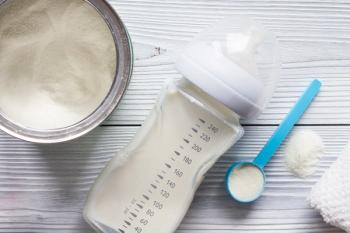
Can exposure to dust mite allergens in breast milk fight against food allergies?
A research team in Australia has tied early exposure dust mite allergens through breast milk to later development of food allergies.
Breast milk has long been referred to as “liquid gold,” and new research reveals the moniker has been well-earned. A study from researchers in Australia found that targeting exposure to certain allergens through breast milk may be the key to fighting food allergies in some children.
About 32 million people in the United States alone have food allergies—including 1 in 13 children, according to
In a
House dust mites are a common cause of allergies, and although exposure to some allergens through breast milk may help prevent food allergies, this is not one of them.
For the study, lactating mice were exposed to dust mite extracts, and later analysis showed that less than just 1 nanogram/mL of these allergens in breast milk was enough to help reprogram immunity in the small intestines of these mice’s offspring. Specifically, researchers found that oral exposure to Dermatophagoides pteronyssinus through breast milk altered tolerance to the common food allergen ovalbumin—the main protein found in egg whites.
Previous studies have shown that infants may already be sensitive to eggs at as early as 4 months of age, putting them at risk of anaphylactic reactions when eggs are consumed. Earlier studies by the same research team found that exposure to egg allergens through breast milk may be preventive against food allergies. This observation, paired with evidence that egg allergies develop early, means that egg exposure through breast milk may be important even before the introduction of solid foods in order to induce oral tolerance. In the same vein, it may also be important to examine ways to manipulate the presence of dust mite allergens in breast milk as a preventive measure against food allergies.
“There is increasing evidence that food allergy may result from lack of oral tolerance induction due to an inappropriate route of allergen exposure … or from defective mechanism of oral intolerance in the gut itself,” the study notes. “Gut colonization by microbiota and exposure to dietary-derived antigens are necessary for efficient oral tolerance induction.”
To fight food allergies early on, the study suggests that targeting certain allergens may be key. The authors suggest that the presence of respiratory allergens, like those from dust mites, may interfere with oral tolerance induction to food antigens. Although more research is needed in larger human studies, the report concludes that altering exposure to dust mite allergens through breast milk may help fight food allergy development.
“The next steps will be to validate our observation in a large human study,” the report notes. “If validated, we propose that manipulating the levels of D. pteronyssinus allergen in breast milk and/or its protease activity will be necessary to endow breast milk with the capacity to protect from food allergy by oral tolerance induction.”
In other words, altering the level of exposure to dust mite allergens in breast milk may help mothers prevent food allergy development in their children.
“This should add an important string to the bow of the beneficial effects of breastfeeding in an era where allergic diseases are surpassing childhood infectious disease morbidity.”
Reference
1. Rekima A, Bonnart C, Macchiaverni P, et al. A role for early oral exposure to house dust mite allergens through breast milk in IgE-mediated food allergy susceptibility. JACI. 2020;145(5):1416-1429.e11. doi:10.1016/j.jaci.2019.12.912
Newsletter
Access practical, evidence-based guidance to support better care for our youngest patients. Join our email list for the latest clinical updates.








